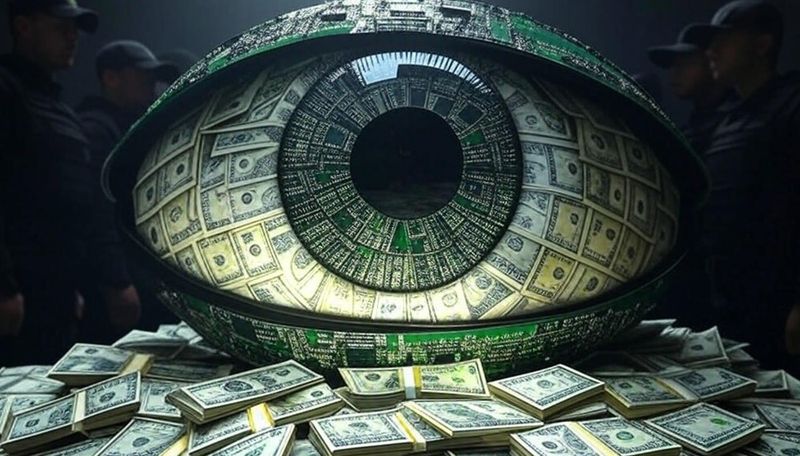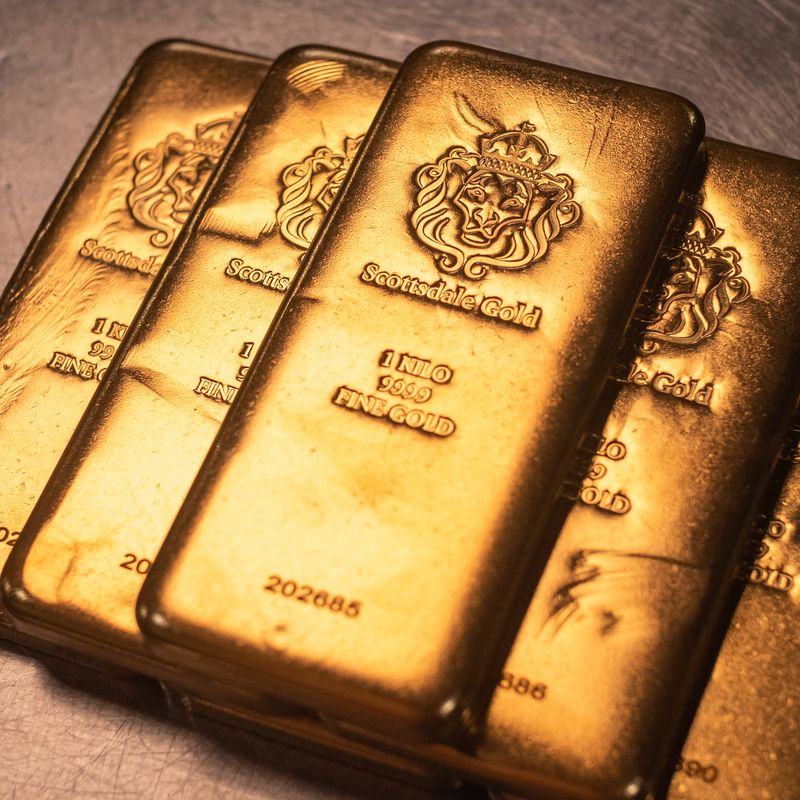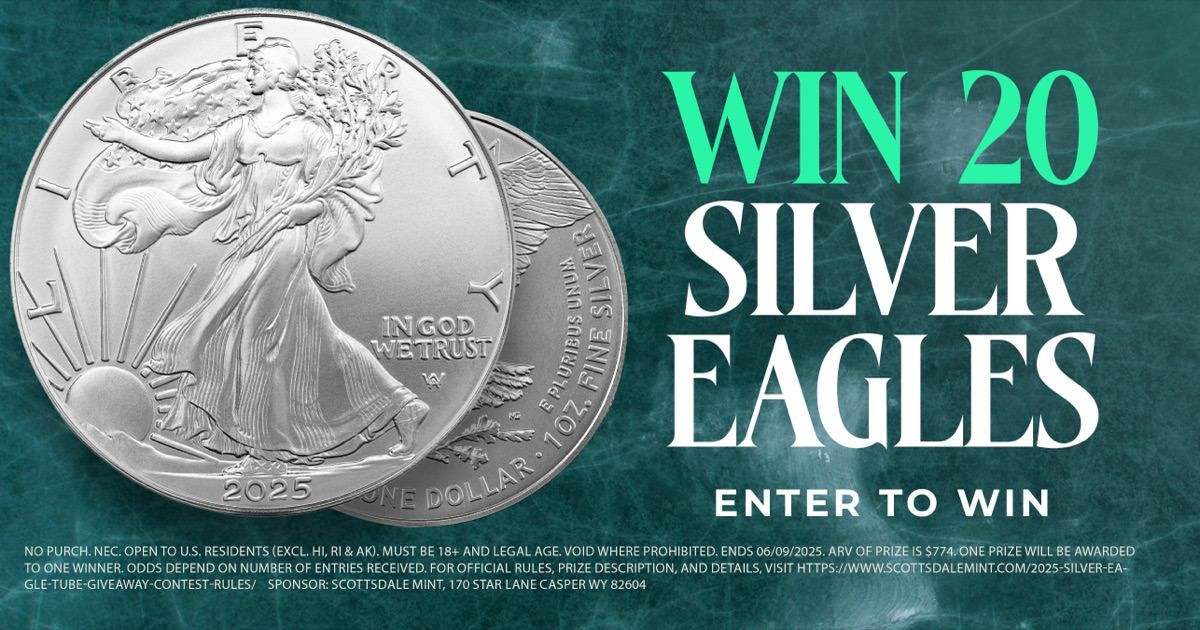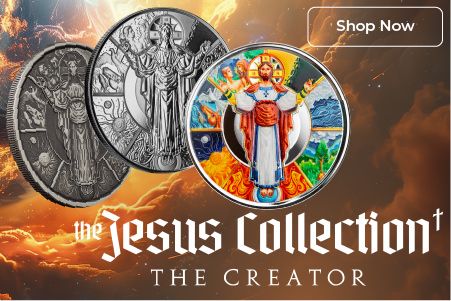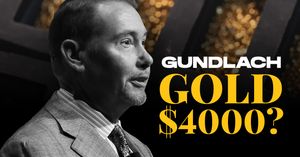What Are Central Bank Digital Currencies?
A Central Bank Digital Currency (CBDC), as the name somewhat implies, is a digital national currency. However, many misconceptions are being floated around about what these truly are. As a CBDC relates to the United States, this would be a digitized U.S. dollar supplied by the Federal Reserve.
As with paper dollars, CBDCs would also be fiat and have no intrinsic value. Its worth would be backed by the government who issued it.
How is this different than using a credit card?
CBDCs tie the users directly to the central bank, rather than to commercial banks or other financial institutions. Also, unlike mobile money or card payments that need to be further processed by intermediaries, CBDC is being designed as a peer-to-peer model. This would make it similar to cash, as transfers can be made almost immediately.
A CBDC would create a direct link between the citizens and the federal government.
Why Are Central Banks Pushing For CBDCs?
That’s a valid question, what’s wrong with the current financial system (other than it not being backed by gold)?
Directly from The Federal Reserve, these are the potential benefits of a CBDC:
Faster and cheaper payments (including cross-border)
It’s convenient and electronic
Expand consumer access to the financial system (giving the unbanked a bank and financial inclusion)
These “benefits” may raise a red flag or two. Since when did central bankers develop such a soft heart?
CBDCs = Crime Fighting?

The Bank of International Settlements (BIS), also known as the “central bank of central banks”, is gung-ho about the role CBDCs can have against money laundering and organized crime. Agustin Carstens, BIS General Manager, had this to say about CBDC implementation and why it’s better than physical currency:
“We don’t know who’s using a $100 bill today and we don’t know who’s using a 1,000 peso bill today. The key difference with the CBDC is the central bank will have absolute control over the rules and regulations that will determine the use of that expression of central bank liability, and we will have the technology to enforce that.”
What this is saying, is central banks will be able to decide how their money can be spent, and the CBDC technology will enable them to enforce that. It’s 24/7 surveillance of user spending habits… to stop crime. This is similar to a bank account, except there’s no opting out.
You might be thinking, how does this improve the current financial system?
Are CBDCs and Cryptocurrency The Same?
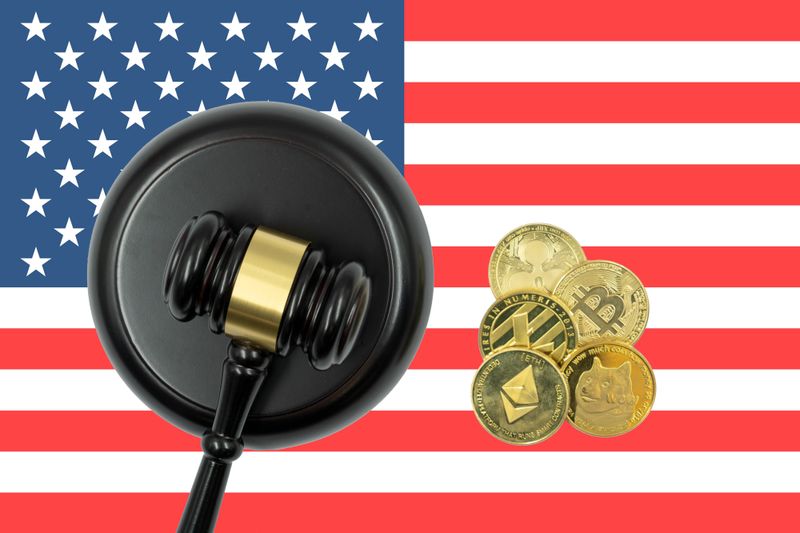
Though a big misconception, the answer is absolutely not.
By now, almost everyone and their uncle has heard of Bitcoin. Whether people invest in them or not, digital currencies have officially become mainstream. Professional sports stadiums have been named after digital exchanges and just about every town has a convenience store with a Bitcoin ATM.
The main difference between cryptocurrency and CBDCs is who has control. Most cryptocurrencies in their true nature are decentralized (not managed by a government or any entity), whereas CBDCs are not.
Take a look at Bitcoin, no one needs permission to use the currency. There are no gatekeepers (unless you use a central exchange), and the holder acts as their own bank.
Key Differences Between Bitcoin and CBDCs
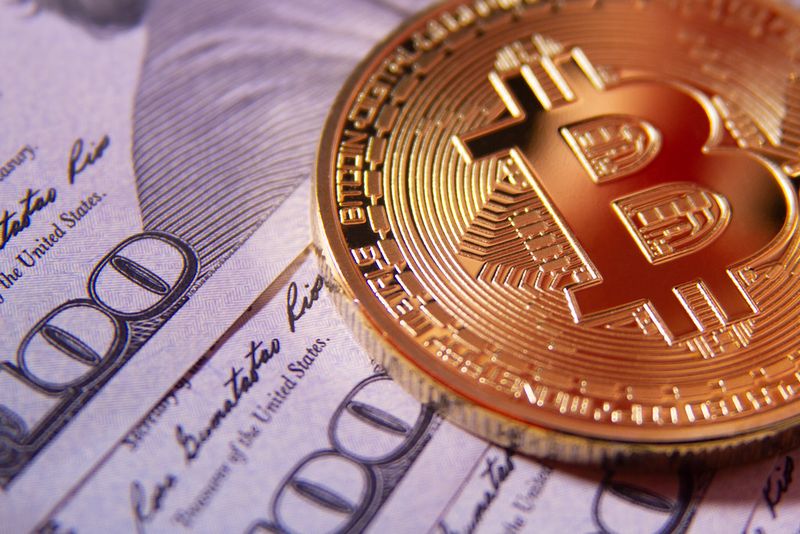
Bitcoin
Decentralized – not controlled or issued by a government
Open System – anyone can transact with it
Censorship Resistant – there is no freezing of accounts or leash on users
Limited Supply – it’s a finite resource, only so much of it will ever exist
Interestingly enough, all of these benefits can be applied to the use of gold and silver in the financial system. Being able to purchase from a private mint, such as Scottsdale Mint, takes the central bank aspect out of the transaction (other than taxes). Precious metals are exempt from monetary and fiscal policy, they can’t be frozen, and the supply is finite. Some may equate precious metals to being a sort of physical form of unregulated digital currency, as they share many of the same strengths.
CBDCs:
Centralized – Issued and controlled by a government or financial system
Closed System – permission is required
Censorable – the government wants to freeze an account? No problem.
Unlimited Supply – just like the current fiat system
CBDC: The Good, The Bad, The Ugly
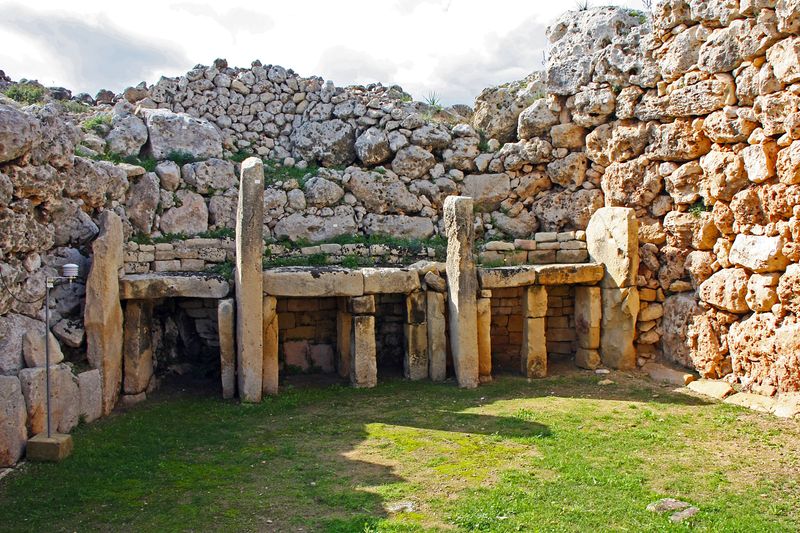
The main benefit being touted by central banks for CBDC development is convenience. It’s more than a digital form of money, it allows for instantaneous transactions and 24/7 movement of funds. Having to wait 2-3 business days to receive a payment will look like the Stone Age.
Also, central banks propose that a digital currency would also expand financial inclusion by reaching more people outside the financial system. Hmm, what’s in it for a government to include more people? Here’s an idea, it rhymes with “faxes”.
The Argument Against a CBDC
Just how useful is it? That’s the biggest question, which is an indication of its uselessness.
There are more risks involved in central bank digital currencies than not. The biggest one is privacy protection.
Governments are well aware that financial control is the ultimate form of oppression, and freezing or seizing assets from bank accounts is a quick method for slowing a group of people down. Does it sound too conspiratorial?
It Allows For Further Control

Political views aside, take a page from the Canadian truckers who were protesting government mandates, and hundreds of supporters had their bank accounts frozen or limited (link). This even reached Canadians donating through sites like GiveSendGo, where the Canadian government expanded their anti-money laundering and terrorist laws to. Even someone hundreds of miles away in Canada could have had their digital assets frozen for being indirectly involved.
“We now have the tools to follow the money. We can see what is happening and what is being planned in real-time and we are determined that this must end now and for good”
– Chrystia Freeland, Canada’s Finance Minister
Negative Interest Rates
To help stimulate economies and provide financial stability, central banks have begun to experiment with negative interest rates, but what does this mean and how can it be applied to a digital currency?
Negative interest rates would help spur the economy by giving an incentive to businesses and individuals to spend or invest their money. “Spur” in the same way a cowboy can spur their horse forward, it doesn’t feel too good. Dropping rates below zero would eat away at people’s hard-earned money, and erode the value overnight.
Central bank digital currencies would pave the path to easier and quicker monetary changes. Cash still stands in the way. During times of negative interest rates, people will be more inclined to hoard more cash.
Programmable Spending

Closing accounts is nothing new, it’s been exhibited by governments and financial institutions before (link, link和 link). A digital currency would allow central banks to make swift changes and enact their own rules without an intermediary.
Take for example precious metals, if, for some reason, the government wanted to crack down on precious metal buyers. They could put a hold on digital payments with certain businesses.
Initially, this feature may be pitched as something for the benefit of society. Such as preventing arms deals between would-be offenders. However, as with most governmental power, it will most likely be abused.
“By programming a CBDC, money can be precisely targeted for what people can own and what [people can do.]”
– Bo Li, IMF Deputy Managing Director
Digital Currency Poses a Cybersecurity Risk
Since everyone’s information is tied to the same source, the havoc a security breach would cause is nothing short of chaos. Rather than a single bank being compromised (which is still a big deal), it’d be the entire central bank and every account tethered to it.
True digital currency is decentralized, so if there were to be a hack, it’d only target that single computer and not the entire network. To take the U.S. for example, with a central bank digital currency, a cyber attack could potentially take down the entire Federal Reserve Bank and create a financial blackout.
Digital Currency is Already Here
Who’s Using It?
Over 100 countries, representing 98% of GDP, have begun to explore CBDCs or are already in a pilot program. As of July of 2023, the Central Bank of Nigeria, Central Bank of Bahamas, and Bank of Jamaica have an active and official CBDC.
Many major economies are currently in a pilot program. This includes Russia, China, India, Sweden, and others. China even promoted a government-funded lottery to get more users on their digital platforms.

What About The United States?
As often as the Federal Reserve claims to be ruminating on a digital currency for the U.S. and keeping its stance neutral, there are projects on the back burner. One is Project Cedar, testing whether cross-border payments could be done safely and quickly using blockchain technology and wholesale CBDCs.
On the retail side of CBDC, the Federal Reserve Bank has been hanging in the grey area, so advancement is not 100% clear. However, with other global power players taking the lead on establishing a central bank digital currency, the likelihood of the US doing the same is not off the table.
Will a CBDC Replace Cash?
That’s up in the air. Without getting into the weeds about what could happen, the Federal Reserve states that a CBDC would simply expand payment options, not replace them. Is that being stated to appease those who feel alarmed? Only time will tell, however, keeping tabs on central banks further down the pipeline may serve as an indication for the US.
Empty heading
Precious Metals Provide a Way to Opt Out – Here’s Why:
Increased Privacy
With gold and silver transactions, there’s no need for encryption to keep your data safe or worry about having an account taken. Physical precious metals can be held without permission from a central bank. It undermines the need for distributed ledger technology. Gold and silver have been around for thousands of years! Precious metals have functioned as a private store of value longer than any financial institution or central bank has existed.
With precious metals, there’s no data harvesting or having your information sold to third-party institutions.
No Programmability
Unlike a central bank digital currency, precious metals aren’t made of 1’s and 0’s. Because precious metals are out of the direct influence of central banks, there’s no devaluing your holdings overnight, like what could be done with negative interest rates on digital wallets.
There’s no telling what’s possible with digital currencies. What if a government wants to curb precious metal purchases by private citizens? Well, a hold on a bank account would do the trick. Commercial financial institutions would be at the will of central banks, and those rules would be passed on.

Security
With a CBDC, a whole new level of security issues comes bubbling to the surface. What if a central bank gets hacked? Will the entire digital payment system go down? What about a central bank directly putting a hold on a portion of its users for whatever reason they see fit? Whether it be for politics, shopping habits, etc.
Security isn’t only vital from outside sources, but also within the system.
Gold and silver have zero of these issues. One of the main benefits of precious metals is they belong to the holder. Security is still important, but it’s the owner’s responsibility. A central bank can’t take away the value of your precious metals, neither are they able to track your holdings.
Real Value
At the end of the day, CBDCs still function as a fiat currency (unless otherwise noted). Be it, an even less attractive form of Federal Reserve notes. At least with physical central bank money, if it loses its value, there’s still a use for it during winter as fuel.
A gold-backed currency is not out of the cards, BRICS countries are in talks of bringing gold back into a new trading currency. It would be a major step towards de-dollarization, which is not yet close to fruition. A shared currency used for their domestic payment system is not yet planned, but that would be a huge blow to the dollar’s dominance.
Nevertheless, whether it’s CBDCs or crypto, gold will always represent real value and the global superpowers know that!
Central Banks Are Buying Gold at Record Highs

The purveyors of fiat currency are taking a wise stance, and stacking gold at a record pace. In 2022, central banks added the most gold since 1967. Central banks buy gold for the same reasons as investors:
To promote stability during times of economic uncertainty
Hedge themselves against fiat currencies
Diversify their portfolios.
If the money makers themselves can’t keep their hands off of gold, and if that’s not a sign to show what’s real, we don’t know what is. Central bank money is a promise (that tends to fade) and gold always represents real wealth.
Another way to think about it, the central banks are ahead of the curve. Without getting conspiratorial, they are partially the financial rule makers. The general public gets their information from the news, but the news sources are from them. Following the leader may not be a bad idea.
Trump Says “NO WAY” to Digital Dollar
Here’s a plot twist that’s getting gold bugs excited – Donald Trump just dropped a bombshell about CBDCs. The incoming president isn’t mincing words: he’ll slam the door shut on any central bank digital currency plans when he takes office in 2025.
“Want to know who controls your money? Just look at what happened in Canada,” Trump declared at a campaign rally, referencing the infamous trucker protest crackdown. He’s promising to block what he calls a “dangerous threat to freedom” that would give the government “absolute control” over Americans’ wallets.
WHOOPS! Looks like the Fed’s digital dollar dreams might need a Plan B. Between Trump’s hard “no” and central banks loading up on gold like it’s going out of style… well, let’s just say the writing might be on the wall for CBDCs in America.
Trump Presidency 2025 Update on Central Bank Digital Currencies
Based on recent developments, the incoming Trump administration appears to be taking a firm stance against implementing a Central Bank Digital Currency (CBDC) in the United States. This position was reinforced during Treasury Secretary nominee Scott Bessent’s Senate confirmation hearing, where he explicitly stated “I see no reason for the U.S. to have a central bank digital currency,” adding that CBDCs are better suited for “countries who have no other investment alternatives.” This aligns with Trump’s own campaign messaging opposing a digital dollar, suggesting that a CBDC implementation is unlikely to move forward under a second Trump administration.
Precious Metals Are Gaining Even MORE Traction
CBDCs have gained a foothold, and more countries are conducting monetary experiments for further development, with some even launching full-fledged platforms. The curtain has been pulled back, and there looks to be no sign of slowing down. Considering that China, Russia, and India are currently testing and implementing a softer rollout, CBDCs aren’t to be ignored.
The good news is that precious metals are also making steps forward. With states passing laws to recognize gold and silver as legal tender, the push for sound money is rapidly growing. More states are ending sales tax on precious metals, establishing depositories, and holding reserves in gold and silver. All of these actions are partly in response to the Fed’s inflationary printing and the loss of confidence in fiat money.
One of the reasons Scottsdale Mint has moved its operations to the beautiful state of Wyoming is because of the state’s leading stance on sound money. Wyoming is at the forefront of the charge and lighting a path for the rest of the U.S. to follow.
Hold real money, invest in precious metals today.
